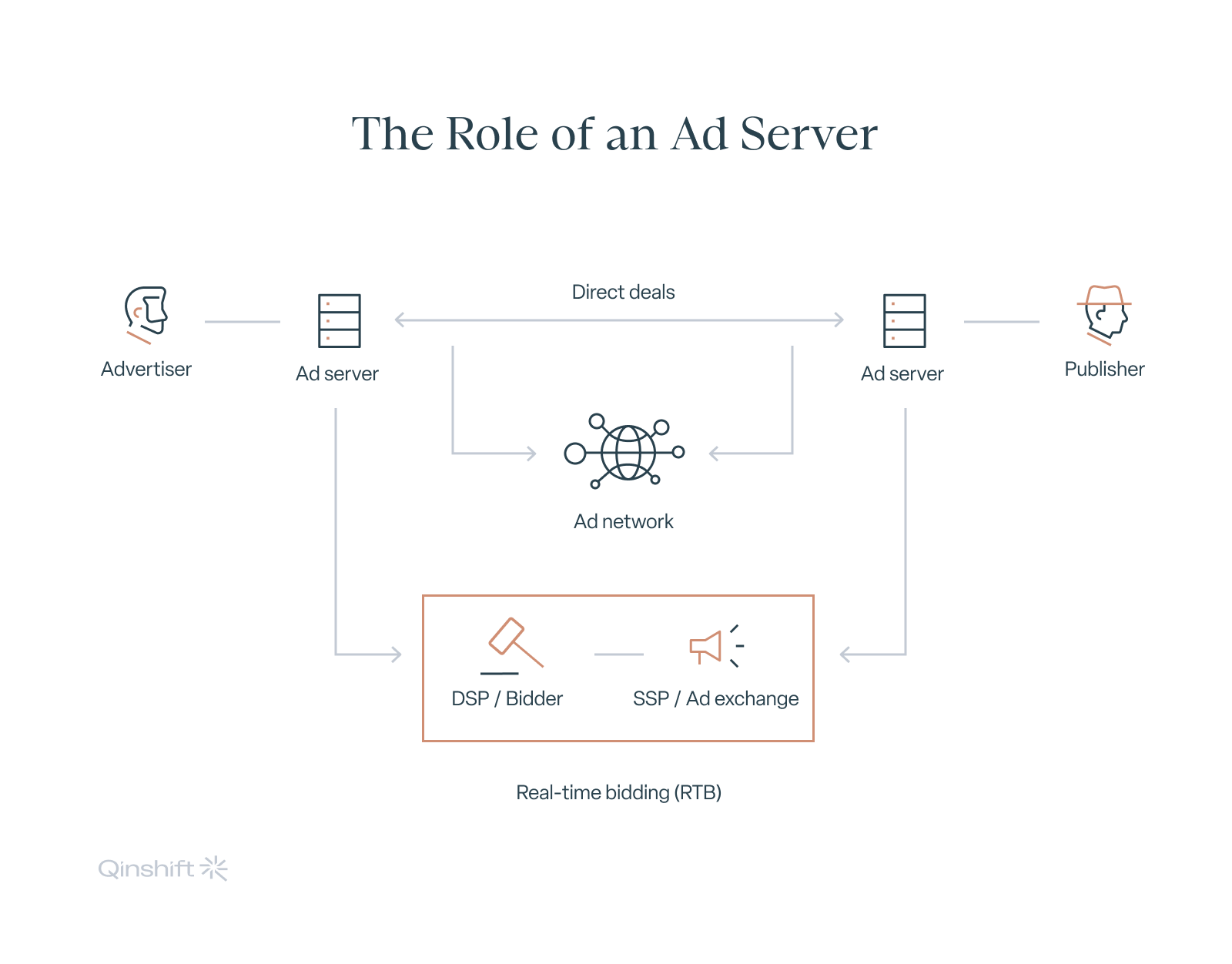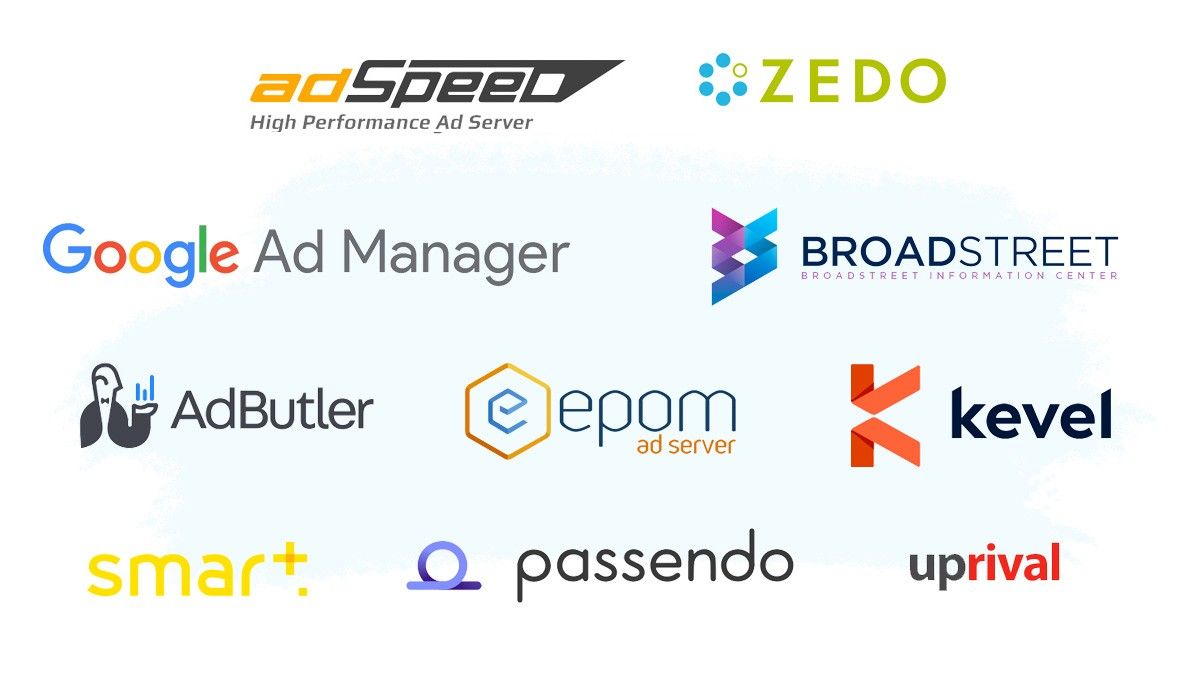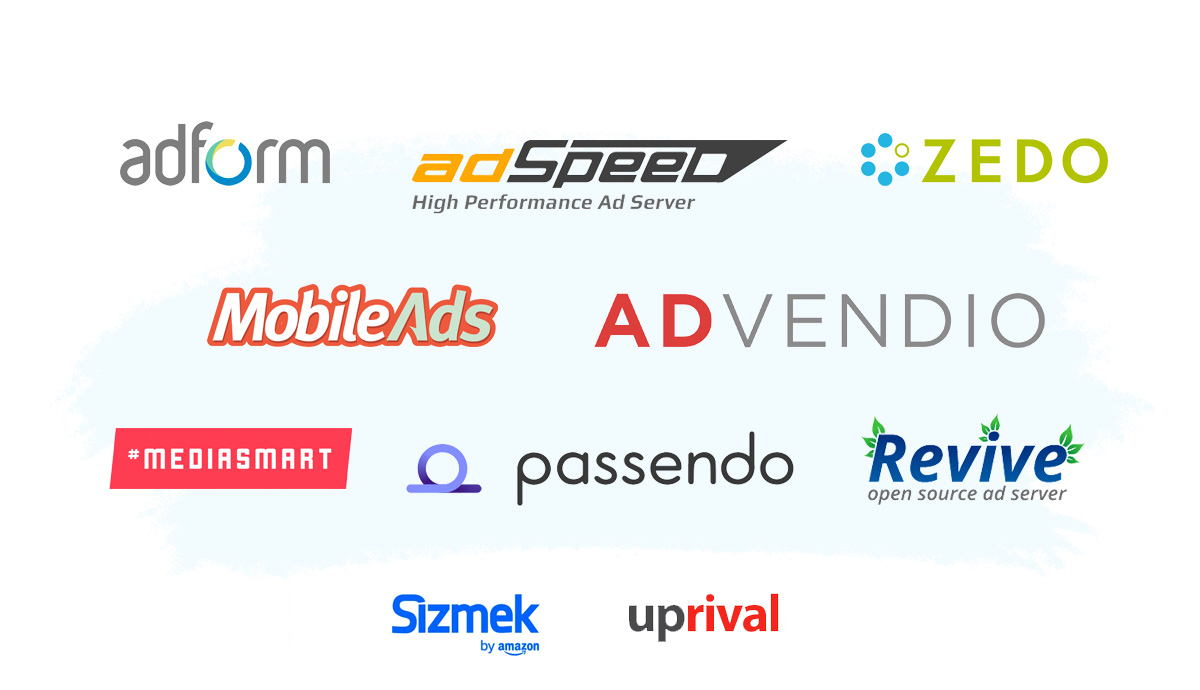What Is an Ad Server and How Does It Work?

Having initially emerged during the 1990s, the ad server is frequently considered to be the first-ever piece of advertising technology.
Even though since then many other types of advertising technology (AdTech) have been released, ad servers still play a key role in the programmatic advertising process to this day.
In this article, we’ll answer the following questions for you:
-
What is an ad server?
-
How does an ad server work?
-
Who are the top ad server companies?
Key Takeaways
-
The ad server is one of the most fundamental technologies in online advertising.
-
A first-party ad server is used by publishers to manage the ad slots on their websites, serve ads from direct campaigns, manage other campaigns (e.g. real-time bidding), and report on the performance of the ads (e.g. impressions and clicks).
-
A third-party ad server is used by advertisers to manage their creatives, send ads to publishers, and collect data about the performance of their campaigns.
What Is an Ad Server?
Ad servers are a piece of advertising technology (AdTech) that is used by publishers, advertisers, ad agencies, and ad networks to manage and run online advertising campaigns. Their core responsibility is making split-second decisions about what ads to show on a website or mobile device, then displaying those to users.
In addition, ad servers collect and report data (like impressions, clicks, etc.) for advertisers and publishers to monitor the performance of their ads and gain insights from them.
On the most basic level, ad servers are to ads what WordPress is to content. In the same way WordPress is used to manage a website’s content, ad servers are used to display and manage online advertising content to the right users on websites.

What’s the Difference Between an Advertiser’s Ad Server and a Publisher’s Ad Server?
Before we get into the differences between the two types of ad servers, we should first address what we mean when we talk about advertisers and publishers.
Advertisers represent the buy side. They’re brands looking to buy online media (a.k.a. ad space or inventory). Conversely, publishers represent the sell side. They’re websites and apps wanting to sell their ad space to media buyers.
The two use so-called first-party and third-party ad servers.
The Publisher’s Ad Server (a.k.a. First-Party Ad Server)
First-party ad servers allow publishers to manage ad slots on their website and display ads that have been sold directly to advertisers (i.e. direct campaigns).
If no direct campaigns are available, first-party ad servers will act as a management platform, deciding which ad codes (i.e. the ones from a third-party ad server, SSP, or ad network) to serve in their ad slots.
Examples of Ad Servers for Publishers
Here are several popular ad servers for publishers:

The Advertiser’s Ad Server (a.k.a. Third-Party Ad Server)
Third-party ad servers are responsible for making decisions about what ads to show on a website.
Additionally, they serve those ads, connect with other AdTech platforms (e.g. demand-side platforms) to purchase inventory, as well as collect and report data such as impressions, clicks, etc.
Examples of Ad Servers for Advertisers
Below you’ll find some examples of ad servers for advertisers:

How Does an Ad Server Work?
Even though first-party and third-party ad servers are basically the same technology, publishers and advertisers use them for slightly different reasons.
Here’s a brief overview of the roles first-party and third-party ad servers play in a simple ad serving process.
How Does a First-Party Ad Server Work?
-
A user visits a website and the browser sends a request to the publisher’s web server asking for the page’s content (i.e. HTML).
-
The publisher’s web server returns the HTML and starts rendering the page’s content.
-
An ad request is sent to a publisher’s ad server to fill the ad slot on the page.
-
The publisher’s ad server chooses an ad campaign based on the information obtained about the user.
-
The publisher’s ad server sends back the JavaScript tag to the website and the ad is displayed to the user.
How Does a Third-Party Ad Server Work?
-
A user visits a website and the browser sends a request to the publisher’s web server asking for the page’s content (i.e. HTML).
-
The publisher’s web server returns the HTML and starts rendering the page’s content.
-
An ad request is sent to a publisher’s ad server to fill the ad slot on the page.
-
The publisher’s ad server chooses an ad campaign based on the information obtained about the user.
-
The publisher’s ad server sends back the ad markup — the code inserted into the ad slot — containing a URL pointing to the advertiser’s ad server.
-
The ad markup sends off a request to the advertiser’s ad server for the ad markup (i.e. code) and counts an impression.
-
The advertiser’s ad server sends the markup to the publisher’s site and the ad is displayed to the user.
Does Every Advertiser or Publisher Need an Ad Server?
In short: no. A large majority of publishers would use ad servers, but the same can’t be said for every advertiser.
Since most DSPs offer ad-serving capabilities, advertisers could just use a DSP to store and manage their creatives. It’s also an option for publishers to simply use an SSP instead of an ad server, seeing as many SSPs also offer ad-serving functionalities and allow publishers to run different types of campaigns.
However, publishers clearly benefit from having an ad server, because it allows them to easily change SSP vendors if they need to. Furthermore, smaller publishers can just add the ad codes directly to their websites, which eliminates the need to add and manage a new system.
Who Are the Top Ad Server Companies?
In this section, we list the key ad server companies operating in the AdTech and programmatic advertising industries.
Although many AdTech platforms provide an ad-serving functionality as part of their offering, we’ve tried to focus on companies that offer standalone ad servers.
AdSpeed
The AdSpeed ad server combines the latest ad serving technologies with advanced web analytics to maximise advertising revenue with a user-friendly interface.
Founded: 2018
Headquarters: New York, US
Broadstreet
Broadstreet is the highest-ranking alternative to Google Ad Manager, specialising in assisting local and B2B publishers in making a lasting impression on their advertisers.
Founded: 2012
Headquarters: Red Bank, NJ
Epom
The Epom ad server is a trustworthy ad management platform designed to make the setup of an effective advertising process easy for everyone, from a website owner to a large-scale cross-channel network.
Founded: 2010
Headquarters: Kiev, Ukraine
Google Ad Manager
Google Ad Manager is a comprehensive platform to boost all of your digital ad revenues and protect your brand in all the new ways and places where people are watching, playing, and engaging.
Founded: 2018 (rebranded from DoubleClick to Google Ad Manager)
Headquarters: Mountain View, US
Kevel
Kevel (previously Adzerk) helps brands worldwide drive more online revenue through sponsored listings, internal promotions, native ads, and more. Their award-winning platform handles over 3 billion API requests every day.
Founded: 2010
Headquarters: Durham, NC, US
MediaSmart
MediaSmart is a self-serve mobile programmatic platform that provides advertisers, trading desks, and agencies with an integrated mobile advertising platform boasting unique incremental impact measurability for proximity and app marketing campaigns.
Founded: 2011
Headquarters: Madrid, Spain
OpenX
OpenX solves a fundamental issue for brands: how to reach consumers, at scale, in a fragmented media environment, powering highly relevant advertising and delivering quality and value to consumers, publishers, and marketers across all ad formats the world over.
Founded: 2007
Headquarters: Pasadena, CA, US
Passendo
Passendo is an ad server and native ad platform for email advertising that helps publishers empower their inventory with high-performing ad formats and advertisers reach audiences in a premium environment.
Founded: 2016
Headquarters: Copenhagen, Denmark
REXRTB
REXRTB is an ad-serving system that brings feature-rich tools for advertising together in one place to provide a range of ad formats for display, mobile, video, native, and popunder/popup.
Founded: 2018
Headquarters: Hong Kong, China
Smaato
Smaato’s digital AdTech platform offers a free ad server and monetisation solution that connects quality publishers with premium marketers to engage audiences on every device around the world.
Founded: 2005
Headquarters: San Francisco, CA, US
UpRival
UpRival is one of the world’s leading third-party ad servers whose mission is to create the best advertising tool on the market with an extensive list of features and advanced targeting options that allow customers to use their platform in a number of different ways.
Founded: 2018
Headquarters: Pleasant Grove, UT, US
VMAX
VMAX is a leading AdTech solution provider. The VMAX AdTech platform is smartly integrated to enable enterprises to fulfil their ad revenue goals and gain higher yields on their ad sales along with delivering seamless ad experiences. VMAX is a holistic platform for managing all advertising business in one place, friction-free.
Founded: 2015
Headquarters: Mumbai, India
Xandr
Built for the programmatic world first with openness and transparency at their core, Xandr’s ad server (formerly AppNexus) helps publishers achieve superior yield optimization and holistic management of their business.
Founded: 2018
Headquarters: New York, NY, US
ZEDO
ZEDO is a platform with high-impact formats that offers publishers products and services, including ad serving and high-impact formats.
Founded: 1999
Headquarters: San Francisco, CA, US
Final Thoughts on Ad Servers
Thank you for reading our article on ad servers.
We hope it’s helped you gain a better understanding of this crucial aspect of digital advertising.
If there’s anything we can do for you, feel free to leave us a message and expect a reply soon!
Looking for AdTech & MarTech development services?
Discover how our teams can help you design, build and maintain advertising and marketing software.
